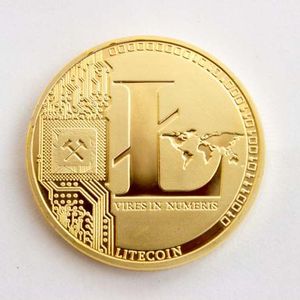GBTC: Quantum Computing Risk (Rating Downgrade)
7 min read
Summary I am downgrading Grayscale Bitcoin Trust to a ‘Sell’ due to accelerating quantum computing risks threatening Bitcoin’s core cryptography within 5–7 years. GBTC’s high 1.5% annual fee and significant tracking error further erode returns, making it unattractive compared to lower-fee alternatives like BlackRock’s IBIT. While some argue quantum threats are overblown, I believe the decentralized nature of Bitcoin makes a swift, coordinated upgrade to quantum-resistant security unlikely. Until Grayscale cuts fees and Bitcoin implements quantum-resistant upgrades, I see little justification for holding GBTC given the existential and performance risks. Co-Authored by Noah Cox and Brock Heilig Investment Thesis Although shares of Grayscale Bitcoin Trust ( GBTC ) are up about 25% year-to-date and nearly 64% over the past year, I am downgrading shares of the ETF to a sell. When I last wrote on the Bitcoin ETF in mid-November, I rated shares as a hold, but I’ve now seen enough evidence to justify downgrading shares to a sell. One of the biggest factors in this decision is the fact that there is a newly material tail risk: Quantum computing breakthroughs that could compromise Bitcoin’s core cryptography within a 5-7 year horizon. In essence, we have to bake this in today. What I am saying here is that this is something we have to bake into Bitcoin’s price and fundamentals today, based on really the hard-to-price threat of quantum attacks on ECDSA-protected keys. My biggest concern with this ETF right now is that if a sufficiently powerful quantum computer emerges, it could derive private keys from public keys (via Shor’s algorithm) and siphon coins, triggering a sudden loss of confidence in Bitcoin – and by extension, the ETF GBTC. The reason this ETF is especially at risk is that its fee structure is so high. The ETF has a 1.5% per annum drag on it (compared to Bitcoin spot price). This compounding (and now with the addition of quantum risks) makes the ETF a sell. Why I’m Doing Follow-Up Coverage In my last piece of coverage I wrote on the ETF back in November called, ‘ Don’t Play With This Bitcoin ETF ,’ I put the ETF at a hold rating because its growing NAV discount (due to fees) meant this ETF would not see the same price action as compared to Bitcoin. Recent quantum advances, like Google’s ‘Willow’ chip delivering a big performance boost, have accelerated expert timelines for ” Q-Day ” (I will explain more on this in the next section) from 2040 and perhaps beyond to 2027-2030. This now becomes a much more immediate threat. It’s why I believe shares are now a sell and why I am doing follow-up coverage. Quantum Computing Risks Really the heart of my concerns are the now accelerating risks with quantum computing. This will directly impact the Grayscale Bitcoin Trust. Google’s ‘Willow’ chip is performing much better than initial expectations. Experts are now projecting that Q-Day, which is, according to Aliro Quantum : “the day that a quantum computer will be able to crack our public encryption systems,” is approaching significantly quicker than many had initially believed. Experts who once forecasted Q-Day to occur in 2040 or beyond now warn that it could come within the next 5-10 years. This window is squarely within many investors’ timeframes, which puts Grayscale Bitcoin Trust at much higher risk, in my opinion. With this, the cascading risk that I see is that ECDSA vulnerability leaves the majority of BTC exposed. Whenever Bitcoin funds are spent (transferred), addresses divulge a public key. The big concern here is that a future quantum computer – one that could come as soon as in the next 5-10 years – could exploit that public key to derive private keys (via Shor’s algorithm) and steal coins. What’s interesting about this is that more than 60% of Bitcoin’s supply (by value) sits in addresses that have already exposed their public keys through reuse or legacy scripts. Included in this 60% are dormant or “cold” wallets. Most notably, Satoshi Nakamoto’s ~1 million BTC are a part of this, and this means that they immediately become high-value targets for quantum-enabled adversaries. The standard response to this risk from the Bitcoin community has been in 2 parts. First, they argue this is far away (this is not true based on my research). Second, they deflect, and argue that post quantum attacks will impact the entire crypto (and traditional) financial system. The problem with their second viewpoint is that traditional financial systems are centralized. Crypto is decentralized. Decentralized works great for systems that want to avoid control by a government. They are terrible for mass adoption/upgrades. I remain worried about the messy transition to post-quantum crypto. In order for Bitcoin to neutralize this threat and keep itself safe and secure, the community must eventually hard-fork or upgrade to a quantum-resistant signature scheme. Unfortunately for Bitcoin, history shows (e.g. Bitcoin’s SegWit soft fork spanning years, Ethereum’s contentious hard fork and chain split, among others) that such upgrades will be slow, fractious, and will likely trigger network splits. Traditional finance will not have these issues since they are centralized systems. JP Morgan Chase does not need to ask its network for a vote when it comes time to upgrade their systems to thwart quantum attacks. They’ll just do it. Bitcoin will. That’s the risk. Valuation One of the most frustrating parts of Grayscale’s Bitcoin Trust is its expense grade. The ETF has an expense ratio fee of 1.50% . When compared to the median (which is gathered from all ETFs) of 0.50%, this is a 200% difference. Seeking Alpha Quant gives Grayscale Bitcoin Trust a grade of an F on this metric. Notably, this ratio of 1.50% is six times higher than Blackrock’s IBIT ( 0.25% ). In essence, you are paying 5x the fees for a product that may have existential risk. If you are in a high risk product due to cyber risk, why would you pay more in fees? Over the past five years, Grayscale Bitcoin Trust’s tracking error rate is 67.99% , which, when compared to the sector median of 9.00%, is more than a 654.22% difference. Once again, Seeking Alpha Quant gives the ETF a grade of F on this metric. What this tracking error means is that the fund will likely track well below the price of Bitcoin over the next 5 years (as it has over the previous 5). So, if Bitcoin goes up, it will track under Bitcoin. And if Bitcoin goes down, it will track below Bitcoin’s core performance. Neither of these scenarios is a winner. It’s why I am a sell. At this point, I am not sure what the fair value of Bitcoin is anymore given this quantum risk. I feel certain this will be painful for the network. I have no idea how painful. What I do know is that over the next 10 years, a 1.5% management fee will eat into 16% of the value of the Bitcoin you could have if you held it directly. So, while unlikely, if Bitcoin stays perfectly flat over the next 10 years, you’re looking at 16% downside just on management/expense fees. Ouch. Bull Thesis While I think things look somewhat bleak for the Grayscale Bitcoin Trust, there is a bull thesis. Some experts, like Bitcoin enthusiast Michael Saylor, argue that quantum threat timelines are simply marketing noise. “It’s mainly marketing from people that want to sell you the next quantum yo-yo token,” Saylor said in a June 6 interview on CNBC’s “Squawk Box.” If Saylor is correct and the timeline is delayed, this will greatly benefit Bitcoin and, by association, the Grayscale Bitcoin Trust. According to Coin Telegraph, Saylor also added that it’s 10,000 times more likely for someone to lose their Bitcoin to a phishing attack than to quantum computing. “It’s the hardest thing in the universe to hack. They will hack your banking system, your Google account, your Microsoft account, and every other asset you have much sooner because they’re an order of magnitude weaker.” Another piece to the bull thesis is that if Bitcoin’s community (peacefully) implements a quantum-resistant signature scheme via a clean hard fork, the attack vector could be closed. On this same front (while we are waiting for the quantum risk to play out), if Grayscale Bitcoin Trust is able to reduce its fees and expense ratio to 0.25% like Blackrock’s IBIT, this would put the ETF on a more even playing field. The problem with these pieces of a bull thesis is twofold. One, Saylor is not a quantum expert. And while I am not a quantum expert either, I am listening to the experts, who say this is closer than many expect. With this, each of the things Saylor said quantum computers would try to crack before Bitcoin, he fails to address the fact that each of these software products (bank accounts, Gmail, etc.) can be upgraded from a central authority (company management). His rebuttal is not him refuting the legitimacy of the threat. It is him deflecting. His deflection of the threat does not make the threat null. That’s the risk. Takeaway While I have been historically bullish on Bitcoin, I am now a sell on Grayscale Bitcoin Trust because I believe that the market has failed to price in the quantum computing tail risk. Bitcoin goes through multi-year cycles. When this cycle inevitably peaks, I believe the quantum risk will be waiting for it on the other side as it goes to rebound from the inevitable decline that I think is ahead. In the meantime, investors are paying high expense fees on this product, which will put a drag on performance even before we think about the quantum risk. Ask yourself: quantum hacking is already risky enough. Do you want to pay someone 1.5% per year to expose yourself to this knockout risk? Probably not. If Grayscale can cut their fees (and if Bitcoin can come up with a straightforward fork in the network to solve for quantum), then I could be inclined to upgrade this to a hold. For now, neither seems likely nor feasible.

Source: Seeking Alpha



